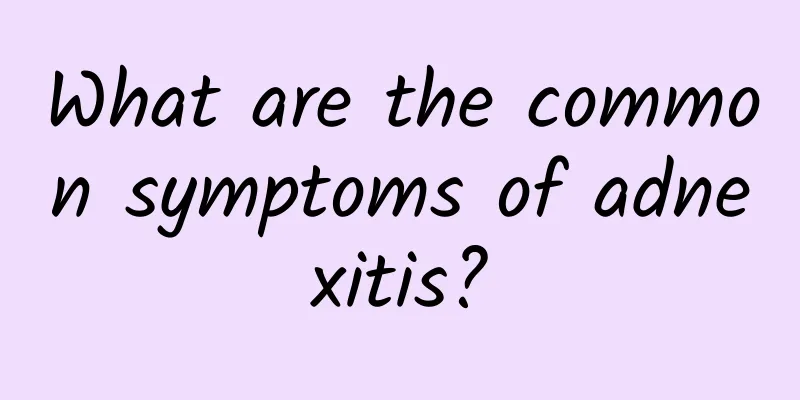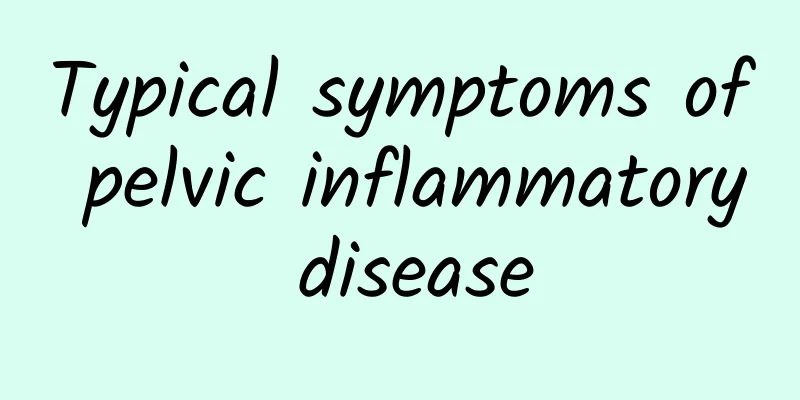What are the symptoms of adnexitis?

|
Symptoms of adnexitis mainly include lower abdominal pain, abnormal vaginal discharge, irregular menstruation, etc. In severe cases, it may be accompanied by fever and general discomfort. Treatment should be based on the cause, including antibiotics, physical therapy or surgical intervention. 1. Lower abdominal pain The most common symptom of adnexitis is persistent or intermittent pain in the lower abdomen, which may radiate to the lower back or thighs. This pain is usually related to inflammation irritating the pelvic tissues, especially after activities or sexual intercourse. If the pain is severe or persistent, it is recommended to see a doctor as soon as possible to avoid worsening of the condition. 2. Abnormal leucorrhea Patients with adnexitis often experience increased vaginal discharge, yellow color, or odor. This is due to increased secretions caused by inflammation, which may be accompanied by bacterial infection. Maintaining personal hygiene and avoiding the use of irritating lotions can help relieve symptoms. If abnormal vaginal discharge persists, a gynecological examination is required to determine the cause. 3. Irregular menstruation Adnexitis may affect ovarian function, leading to irregular menstrual cycles, increased or decreased menstrual flow. Some patients may also experience prolonged menstruation or aggravated dysmenorrhea. Adjusting lifestyle, such as maintaining a regular work and rest schedule and avoiding excessive fatigue, can help improve menstrual problems. If symptoms are severe, hormone therapy or Chinese medicine conditioning should be performed under the guidance of a doctor. 4. Fever and general discomfort Patients with acute adnexitis may experience systemic symptoms such as fever, fatigue, and loss of appetite. This is due to the activation of the immune system caused by the inflammatory response. Timely use of antibiotics is the key, while also paying attention to rest and nutritional supplements to enhance the body's resistance. 5. Treatment methods Drug treatment: Common antibiotics such as cephalosporins and metronidazole should be used according to doctor's advice. Physical therapy: Such as hot compresses and infrared irradiation can relieve pain and inflammation. Surgical treatment: For severe cases, such as abscess formation or fallopian tube blockage, laparoscopic surgery or fallopian tube unblocking may be required. The symptoms of adnexitis are varied, and early detection and treatment are crucial. If the above symptoms occur, you should seek medical attention in time to avoid delaying the disease. Through medication, physical therapy or surgical intervention, most patients can effectively relieve symptoms and recover their health. |
<<: Why is premenstrual leucorrhea abnormal?
>>: Delayed menstruation without pregnancy, abnormal leucorrhea
Recommend
What is cervical precancerous lesions
What are cervical precancerous lesions? Cervical ...
What are the hazards of curettage during menopause? This is already a well-known fact
When women reach menopause, their ovulation funct...
Kaka vomited again! Pregnancy rumors are flying everywhere and the goddess cries
Lady Gaga has gained 14 kilograms recently, and t...
Jun Ji-hyun's favorite! Fried chicken + beer is high in calories
The Korean drama "My Love from the Star"...
Remember these 7 tips to lose weight and lose weight more easily
As many as 68% of women believe that perseverance...
Garlic is great! Research: Garlic can cure food poisoning
Garlic, one of the indispensable spices in Orient...
Tonic soups that patients can choose after abortion
After abortion, the patient should receive approp...
What are the common treatments for dysmenorrhea?
Normal menstruation is a sign of a healthy woman,...
What are the symptoms of ovarian cysts?
What is an ovarian cyst? What are the symptoms? I...
Can syphilis be cured?
Can syphilis be cured? Early syphilis is highly c...
What medicine is effective for bacterial vaginosis
Treatment for bacterial vaginitis can usually be ...
What are the consequences of long-term irregular menstruation?
What are the consequences of long-term irregular ...
If you want to lose weight when eating out, don’t eat too many omelets or hamburgers! Beware of the hidden calorie mines in these three types of breakfast
Breakfast is the source of energy to start the da...
Can cervical warts heal on their own without treatment?
Cervical warts are a relatively common disease, a...
What injections should be given for uterine fibroids? What injections should be given for uterine fibroids to prevent recurrence if menstruation is not coming?
What injections should be given for uterine fibro...









